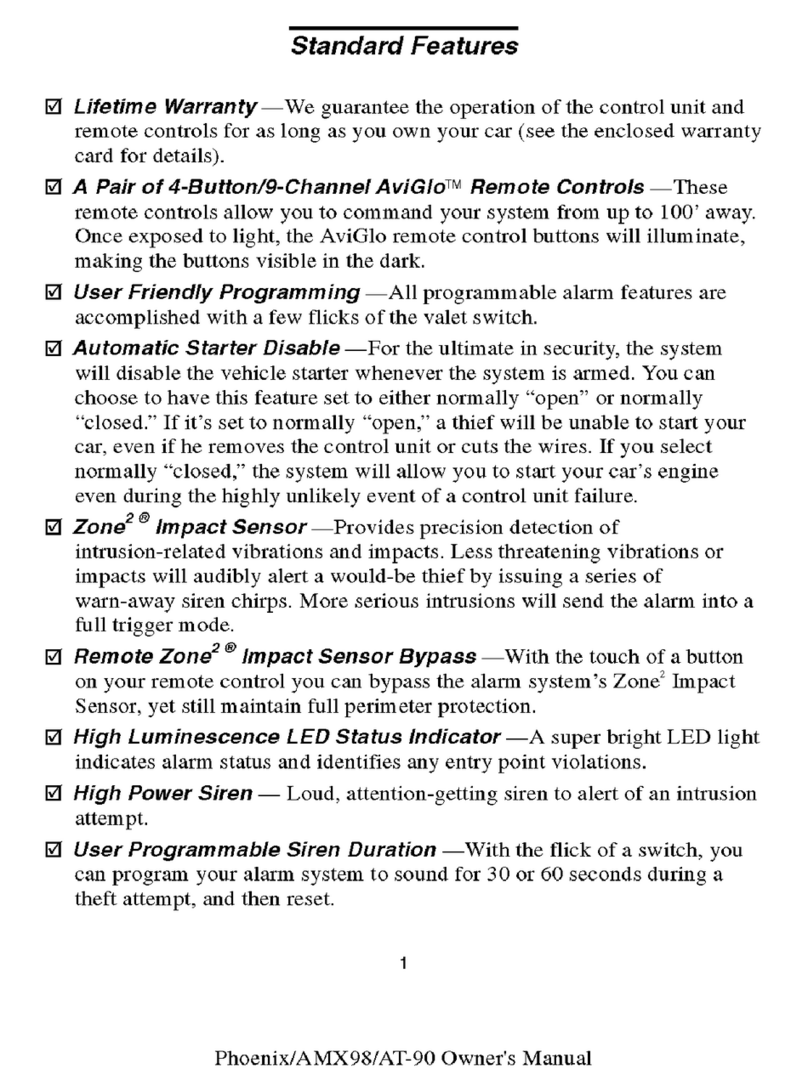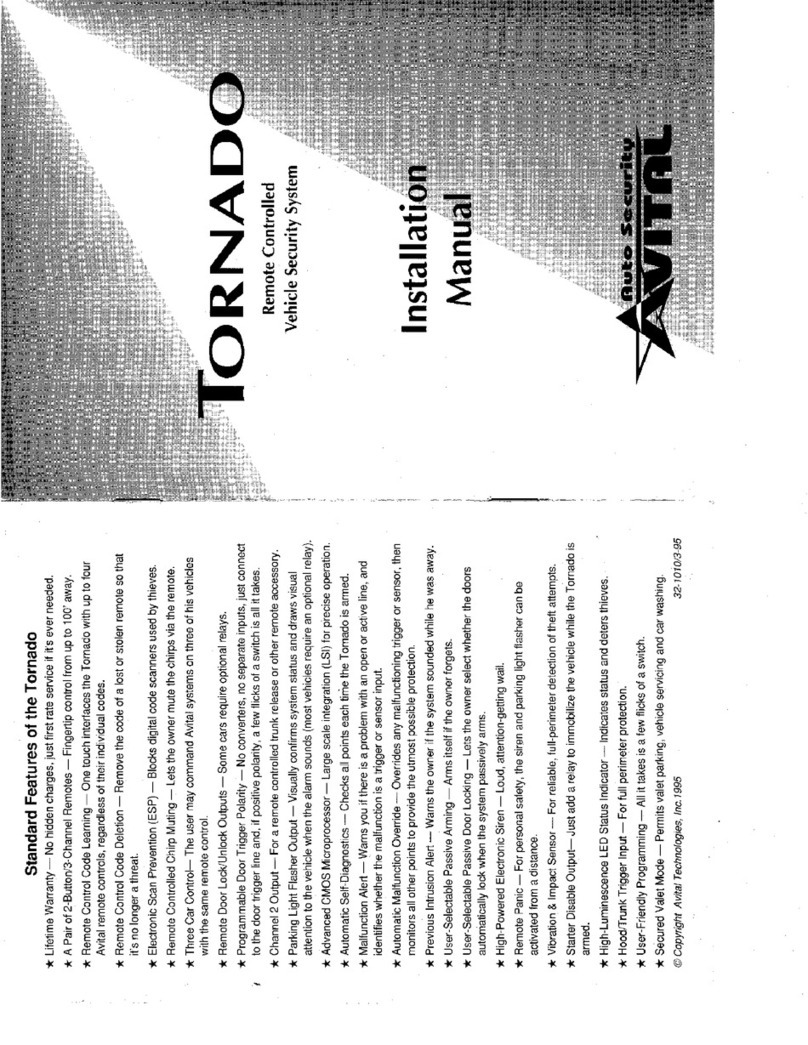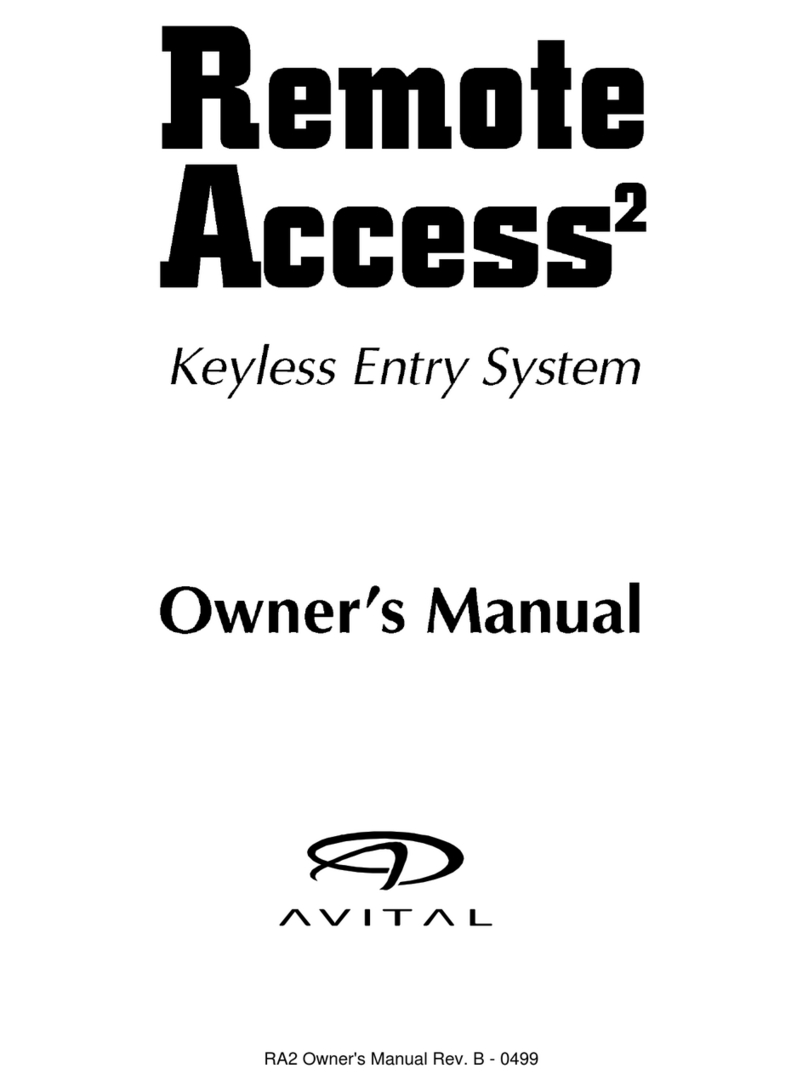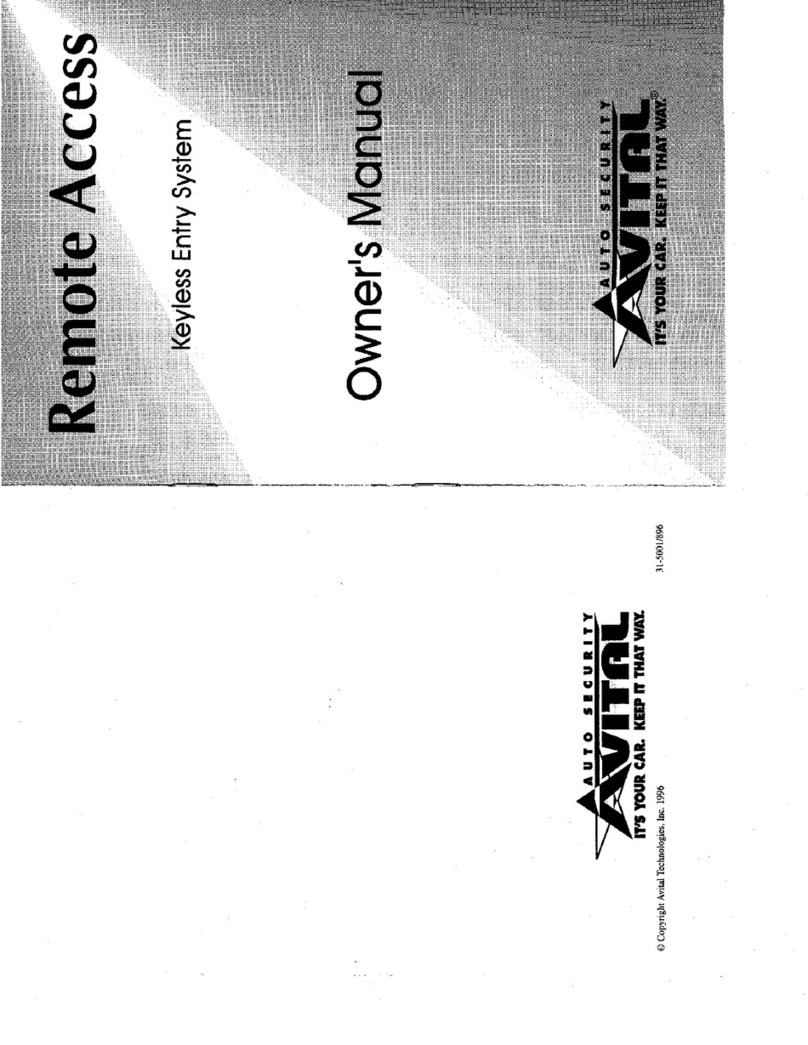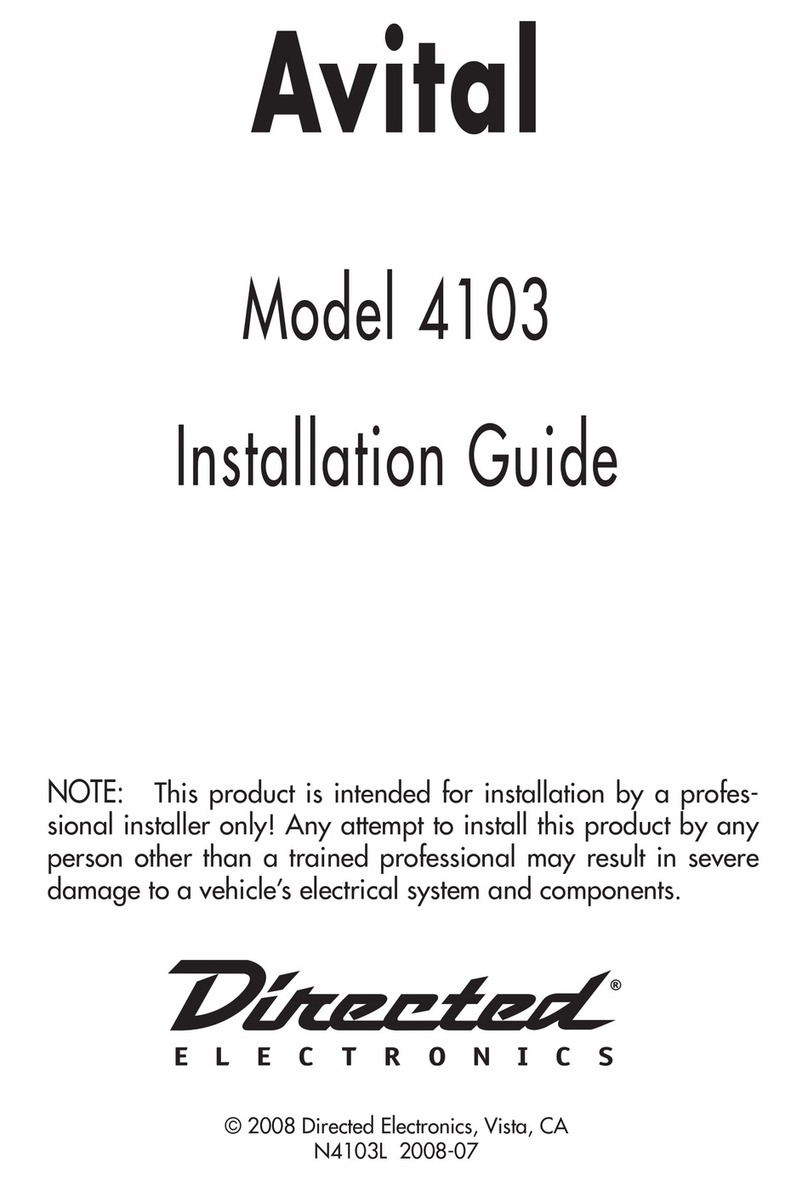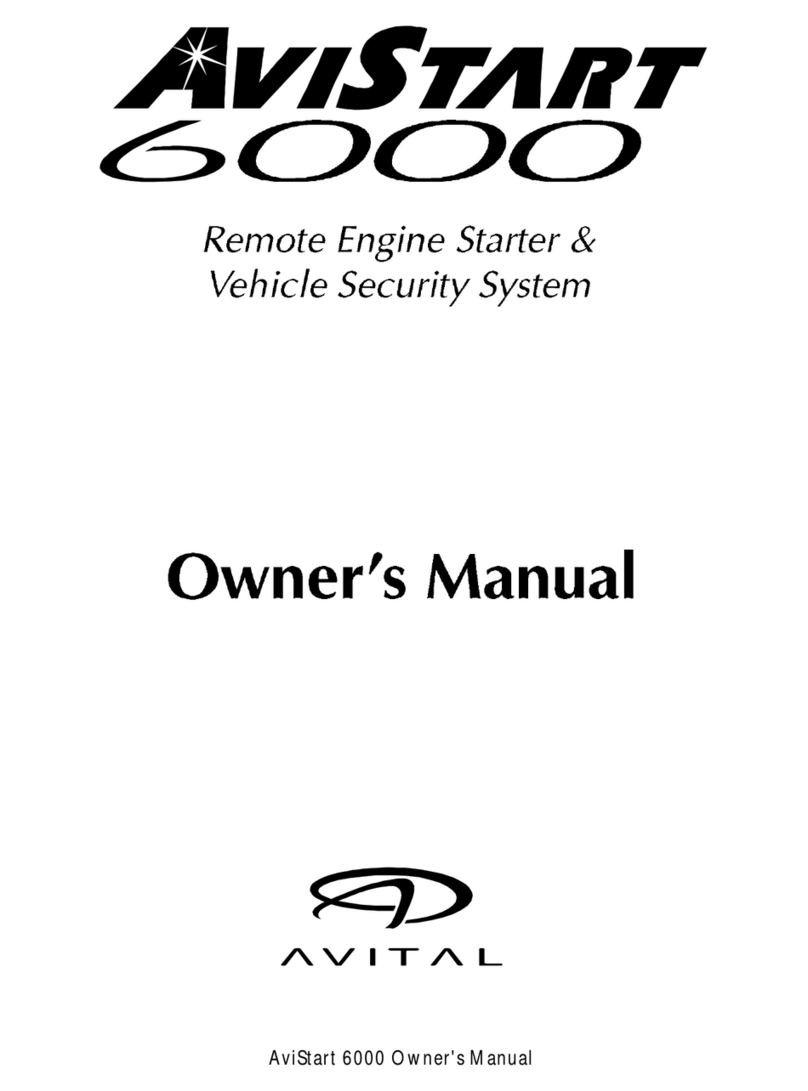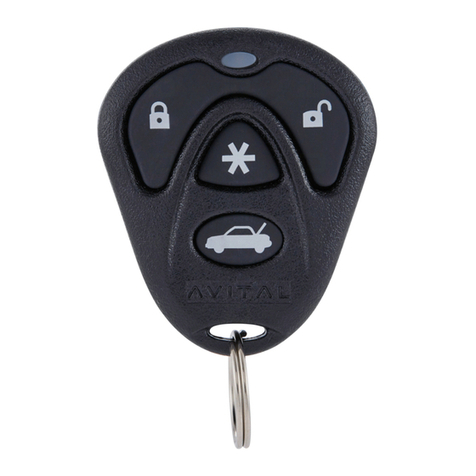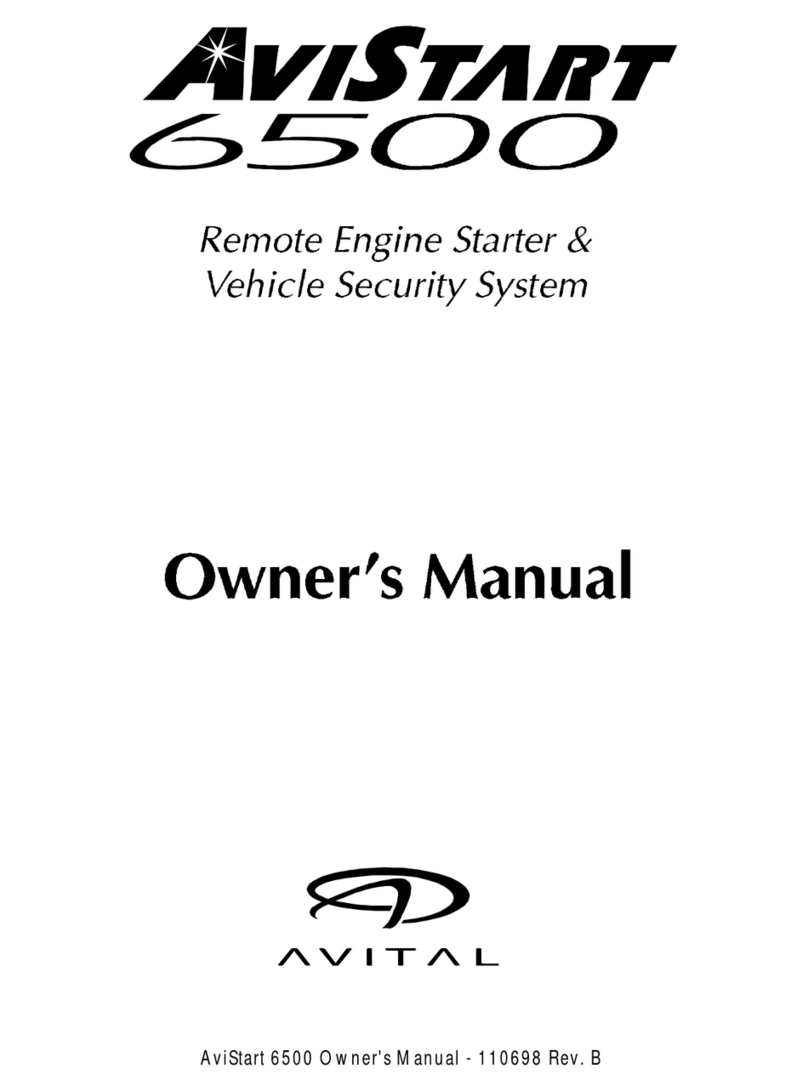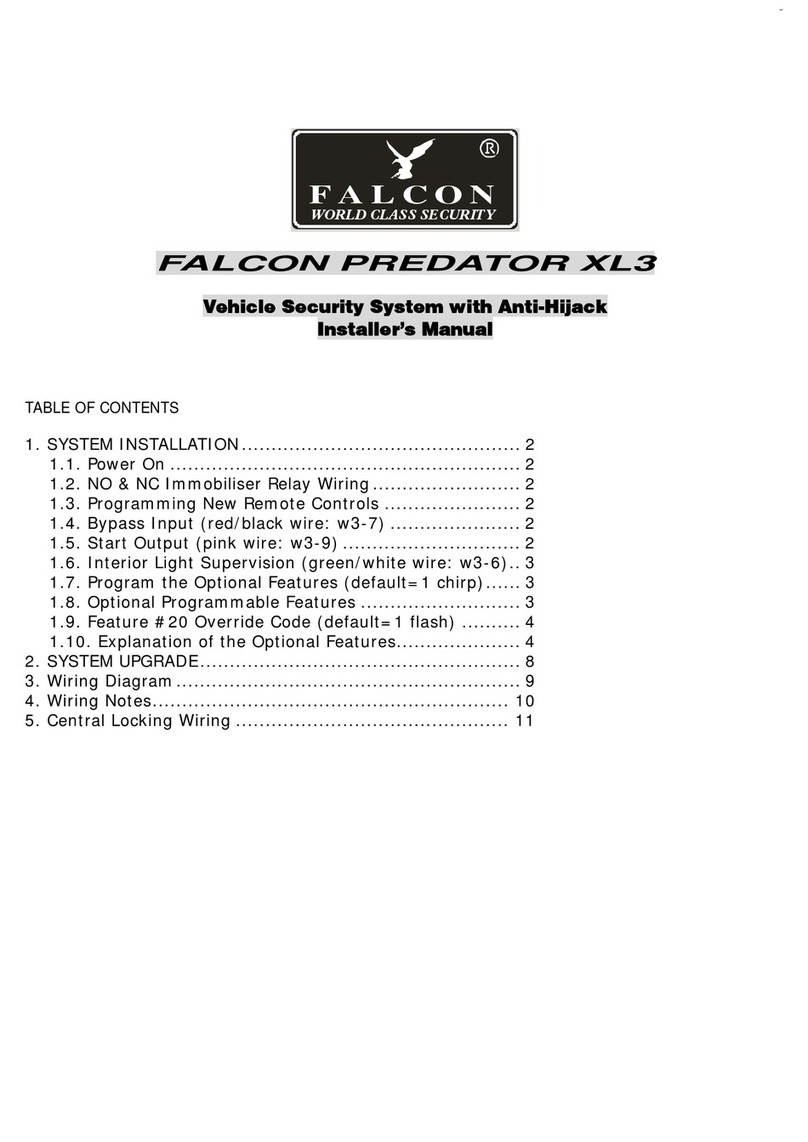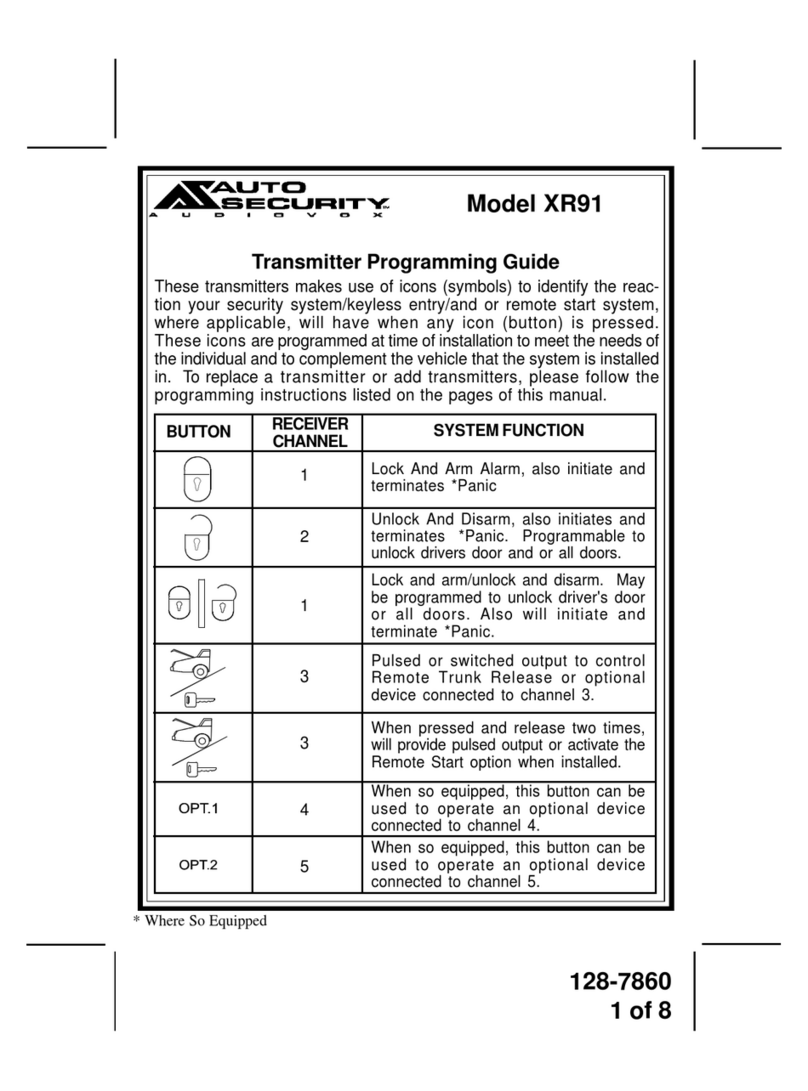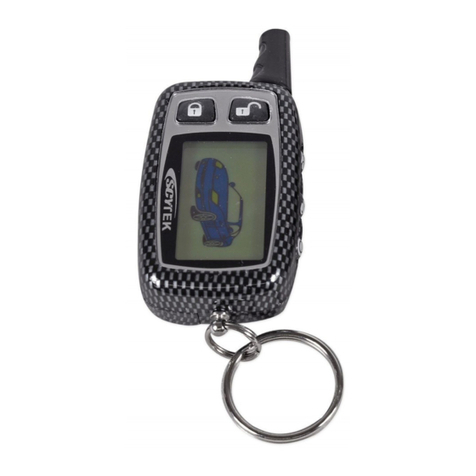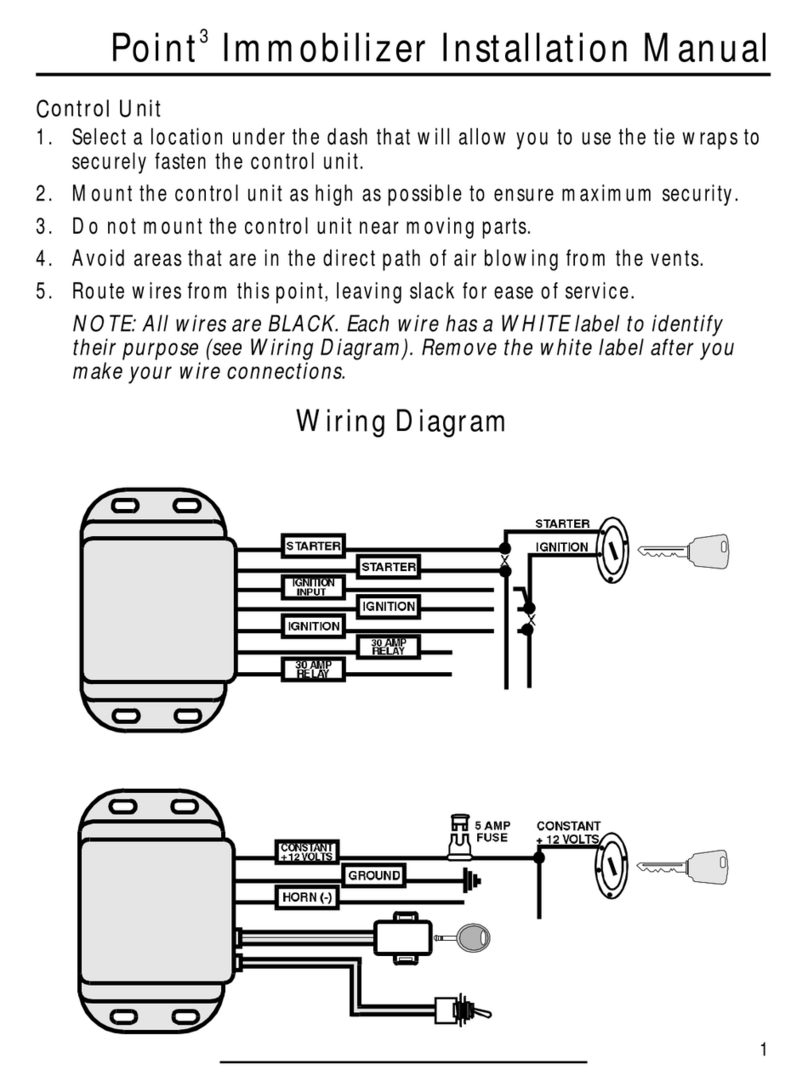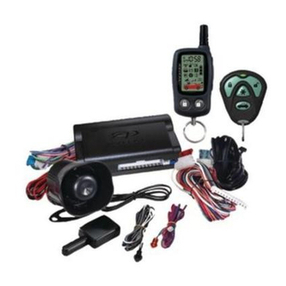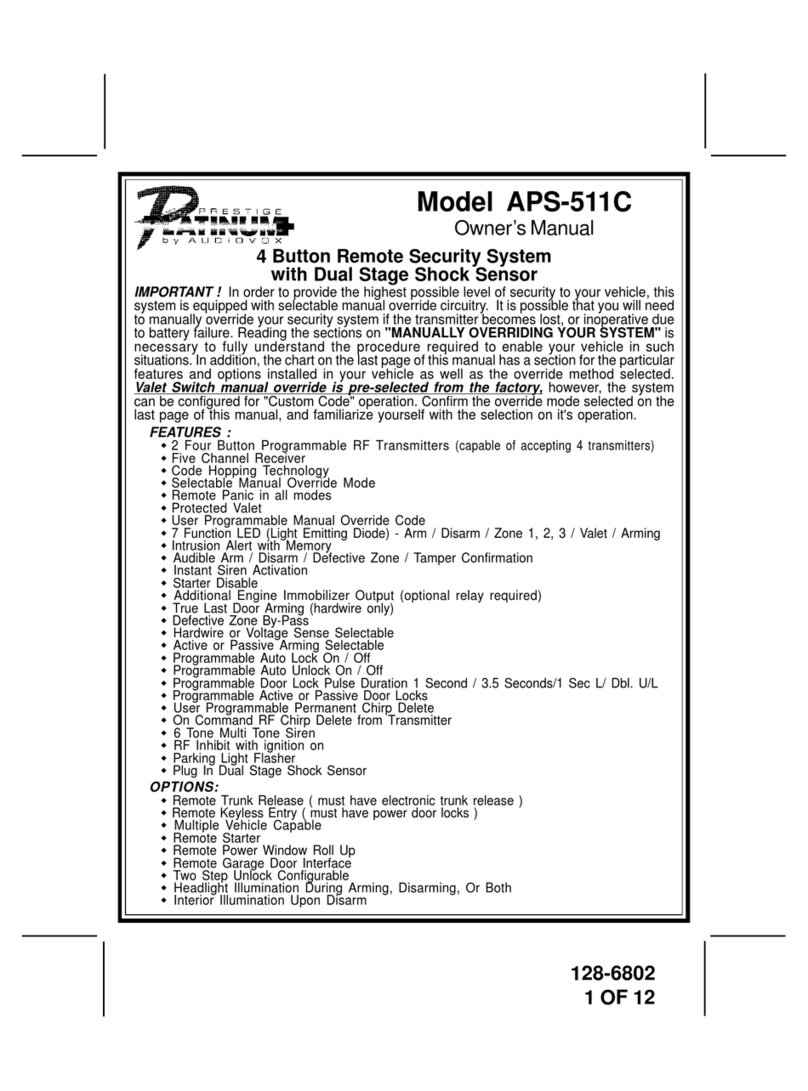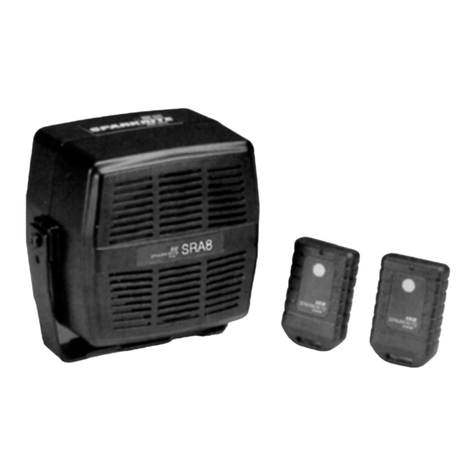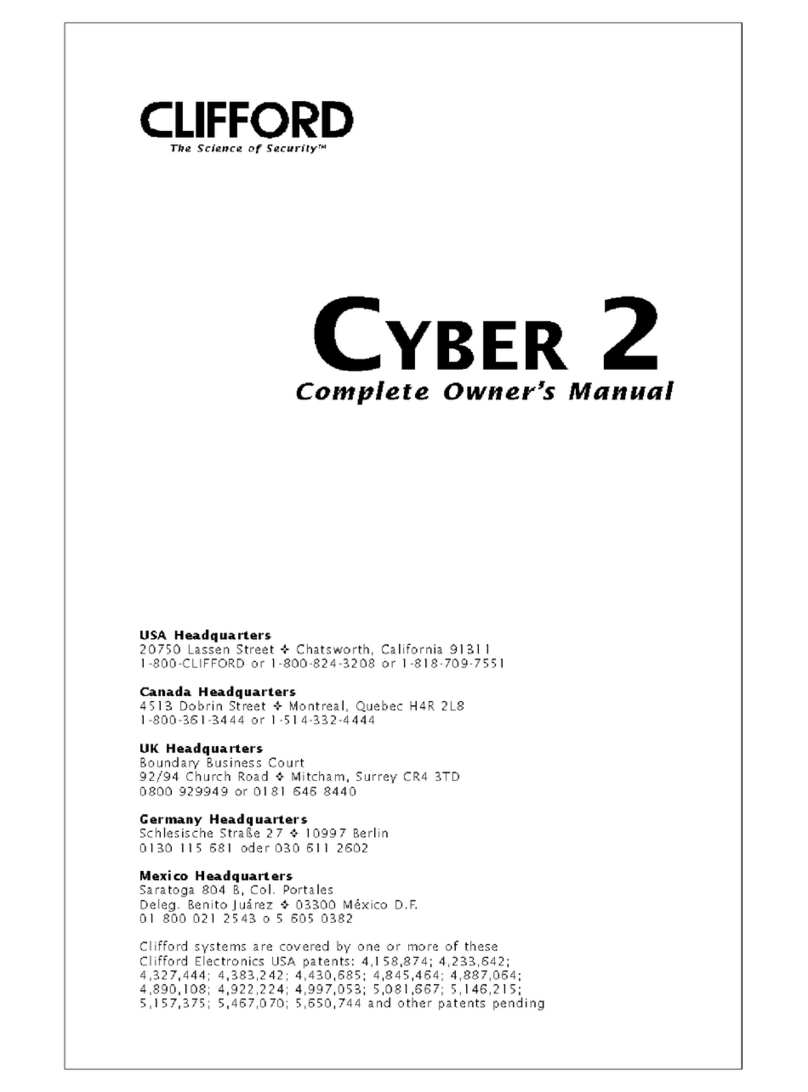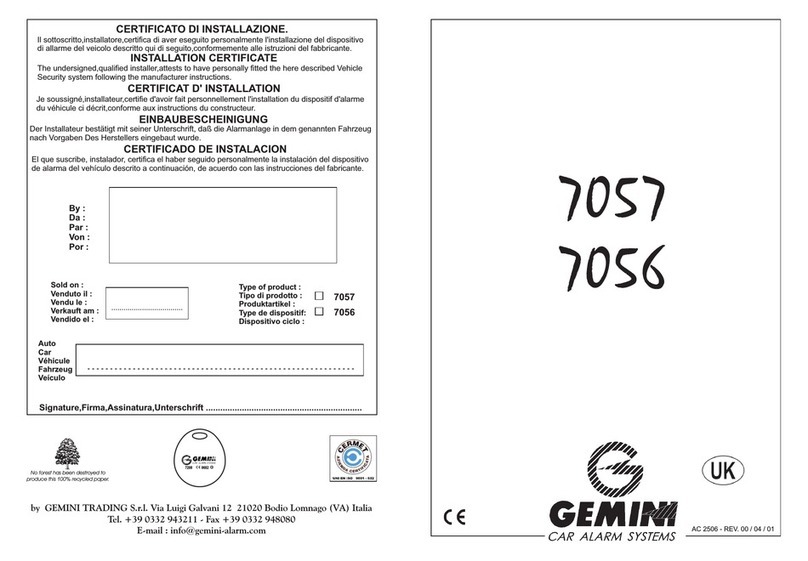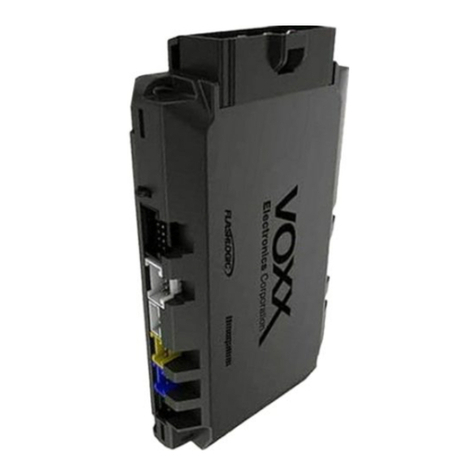2© 2001 Directed Electronics, Inc. Vista, CA
table of contents
Bitwriter™, Code Hopping™, DEI®, Doubleguard®, ESP™, FailSafe®, Ghost Switch™, Learn Routine™, Nite-
Lite®, Nuisance Prevention Circuitry®, NPC®, Revenger®, Silent Mode™, Soft Chirp®, Stinger®, Valet®,
Vehicle Recovery System®, VRS®, and Warn Away®are all Trademarks or Registered Trademarks of
Directed Electronics, Inc.
what is included
■The control module
■Two 2-button remote transmitters
■The plug-in status LED
■The plug-in Valet/program switch
■The 12-pin primary harness
■The 6-pin door lock harness
■The 2-pin starter kill harness
■The owner’s guide
■The installation guide
What Is Included . . . . . . . . . . . . . . . . . . . . . 2
Primary Harness (H1), 12-Pin Connector . . . . . 3
Door Lock Harness (H2), 6-Pin Connector . . . . 3
Starter Kill Harness (H3), 2-Pin Connector . . . 4
Primary Harness (H1) Wire Connection Guide. . 4
Plug-In LED and Valet/Program Switch. . . . . . . 7
Door Lock Harness (H2) Wire Connection Guide. . 8
Identifying the Door Lock System . . . . . . . . 8
At the Switch . . . . . . . . . . . . . . . . . . . . . 9
Type A Door Locks: Positive-Triggered,
Relay Driven System . . . . . . . . . . . . . . . . . 9
Type B Door Locks: Negative-Triggered,
Relay Driven System . . . . . . . . . . . . . . . . . 9
Testing Reversing Polarity Systems . . . . . . . 10
Type C Door Locks: Reversing Polarity System. 11
Type D Door Locks: Adding One or More
After-Market Actuators . . . . . . . . . . . . . . . 12
Type E Door Locks: Electrically-Activated
Vacuum. . . . . . . . . . . . . . . . . . . . . . . . . 13
Type F Door Locks: One-Wire System
(Cut to Lock, Ground to Unlock) . . . . . . . . 14
Type G Door Locks: Positive Multiplex . . . . . 14
Type H Door Locks: Negative Multiplex . . . . 15
Type A Progressive Door Unlock . . . . . . . . 17
Type B Progressive Door Unlock . . . . . . . . . 18
Starter Kill Harness (H3)
Wire Connection Guide . . . . . . . . . . . . . . . . 18
Transmitter/Receiver Learn Routine. . . . . . . . 19
To Advance From One Channel to Another . . 20
To Exit Learn Routine . . . . . . . . . . . . . . . 20
Transmitter Configuration . . . . . . . . . . . . . . 20
Operating Settings Learn Routine . . . . . . . . . 21
To Access Another Feature . . . . . . . . . . . . 22
To Exit the Learn Routine . . . . . . . . . . . . . 22
Features Menu . . . . . . . . . . . . . . . . . . . . . . 22
Feature Descriptions . . . . . . . . . . . . . . . . . . 23
Troubleshooting . . . . . . . . . . . . . . . . . . . . . 23
Wiring Quick Reference Guide . . . . . . . . . . . 24
